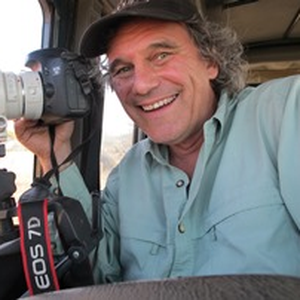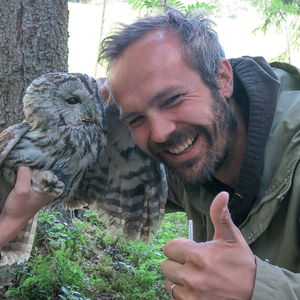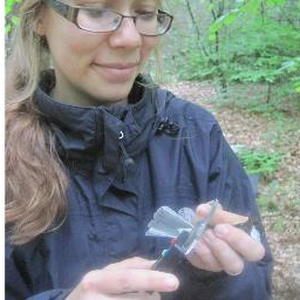
Marie -Josée Fortin
University Professor at University of TorontoTitle of presentation: Ecological Networks in Dynamics Landscapes
Abstract: Species persistence is the result of a suite of simultaneous direct and indirect threats from climate change and land-use change that homogenize ecosystems. Such global change results in the uncoupling of trophic links due to phenological change and species range shifts resulting in species non-analog interactions. Hence, the fabric of species persistence and the ecosystem services that they provide are precarious, to say the least. Yet, the vulnerability of ecological networks will vary depending on the magnitude of the mismatches between changes in habitat (amount, quality, configuration) and species biotic responses to those changes (species’ abilities to acquire resources, the stability of species interactions, and the pace of thermal niche tracking). To mitigate these rapid changes, several conservation strategies have been proposed such as the establishment of protected area networks. Unfortunately, there is a conundrum about the positive (rescue effect through dispersal, gene flow) and negative (increased risk of species invasion, predation, disturbance spread) effects of connectivity and how to implement such connectivity to optimize species persistence in such protected areas. I show that network metrics can depict how the spatio-temporal dynamic of landscapes that affect ecological network topology, species turnover, and the rewiring of species interactions in response to global change.
Bio: Professor Fortin's research covers three main areas: (1) spatial ecology (species-habitat relationship, scaling issues, fragmentation, connectivity, conservation); (2) spatial and landscape statistics (sampling, edge detection, spatial autocorrelation, randomization tests, graph theory) and (3) forest ecology (disturbances, fire spatial dynamics, forest harvesting modeling).

Andrew Dobson
Professor of Ecology and Evolutionary Biology at Princeton UniversityTitle: The Ecology, Economics and Evolution of Emerging Pathogens.
Abstract: In this talk I'll examine three aspects of emerging pathogens. Initially, I'll describe some earlier work on Nipah and Hendra viruses and more general ecological mechanisms that lead to human exposure to novel wildlife pathogens. I'll then update some recent methods for estimating the cost of preventing future outbreaks and compare it to the current cost of the Covid-19 pandemic. In the final section I'll make some informed speculation about the future evolution of Covid-19 based upon long term studies of an avian pathogen with similar aetiology to Covid-19.
Bio: Parasitic worms, bacteria and viruses are a constant feature of the daily lives of most 'healthy' populations of animal and plant species. My research is concerned with the ecology of infectious diseases and the conservation of endangered and threatened species.

Patrick Karell
Academy Research Fellow at Novia Applied University, RaaseporiTitle: Colour polymorphism as a biomarker for adaptations to global change: from morph-specific ecophysiology to ecogeographical patterns
Abstract: In order to understand if and how populations are able to respond to global climate change we need a holistic understanding of specific study systems where we can identify not only large scale distribution patterns, but also the selective pressures and ecological circumstances that create these patterns. Colour polymorphism is a useful phenotypic biomarker to study how environmental change affects selection pressures and the evolutionary and ecological consequences thereof. This is because theory predicts that heritable colour morphs are adaptations to different environments. Using our study system, the colour polymorphic tawny owl, I will show how the brown and the grey colour morph are differently sensitive to winter climate and how this connects to colour morph specific life history syndromes and evolutionary responses in the population. Second I will present our results linking these morph-specific life histories to differential physiological profiles and prey use of the morphs. I will also show how winter landscapes affect detectability of the morphs and discuss how differences in physiology, behaviour and protective coloration form these distinctive colour phenotypes. Lastly I will show how the distribution of tawny owl colour morphs is changing in time and space across the species range in relation to climate. Altogether, our results suggest that colour polymorphism can be used as a bioindicator of environmental change and constitute an example of a species responding rapidly to climate change.
Bio: I am an evolutionary ecologist with my main research interests ranging from ecological immunology to life history evolution, behavioural ecology and population dynamics. In my research I investigate ecological and evolutionary processes acting under environmental change in order to understand and predict the persistence of species. I use individual based long-term data and detailed experiments in specific model systems to get new insights in such processes. I believe high quality basic research built around a solid theoretical framework is the key to successful applications in nature conservation and natural resource management.

Suvi Ruuskanen
Assistant professor in Environmental Physiology at University of JyväskyläTitle of presentation: Transgenerational and developmental plasticity in a changing world
Abstract: Transgenerational and developmental plasticity due to early-life environmental conditions have been suggested to play a role in adapting to environmental challenges. Are they a solution to population persistence under rapid environmental changes? What do we need to know to understand the potential for this phenomena? I summarize our recent empirical work on transgenerational and developmental responses to key environmental challenges (including temperature variation, pollution and generalized early-life stress) using birds as a model system. Birds provide an excellent model to study transgenerational plasticity as the embryo environment can be largely uncoupled from maternal influences during early development. I focus especially on the mechanisms and constraints underlying transgenerational and developmental plasticity, such as hormones and epigenetics. In addition, briefly discuss the insights from our recent evolutionary modelling approaches. Understanding the relative contribution of different types of plasticity on organismal phenotypic variation and responses to environmental changes may help us predict responses to future changes.
Bio: My research fields are at the intersection of evolutionary ecology, ecophysiology, behavioral ecology, molecular ecology and ecotoxicology, thus I consider myself as an integrative biologist. I am broadly interested in the proximate and ultimate mechanisms underlying life-history and phenotypic variation. I want to understand how physiologically-regulated traits enable organismal adaptation to changing environmental conditions. I have passion for understanding the contribution of non-genetic inheritance on phenotypic variation, in the context of extended evolutionary synthesis, and thus my group studies various mechanisms of non-genetic inheritance, such as maternal hormones, epigenetics and microbiome. We also run one of the only eco-endocrinology labs focused on thyroid hormones.